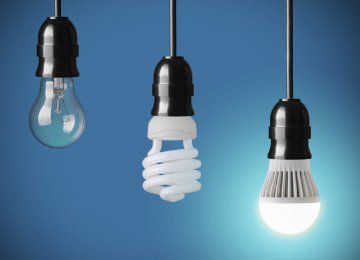
An Introduction:
Our family have LED lighting in our home and use LED bicycle lights and torches. Now that we are coming into winter we are using them a lot more. This reminded me of an article I read in a medical book called Fat for Fuel by Dr. Joseph Mercola some years ago. He documented some of the studies with regards to ‘blue lighting’ in both the sun (the light spectrum) and the lighting we are manufacturing. Most importantly he discusses the effect it is having on our sight long-term.
In A Nutshell:
LED lights produce light that is very high in ‘blue light’ and low in red light. Blue light is not inherently dangerous but we are designed to only recieve it in the early hours of the day. Sunlight is ‘perfect light’ meaning that it’s perfectly balanced with equal amounts of red, blue, infrared, near infrared and ultraviolet light. When you are exposed to LED’s the high concentration of blue light can lead to some serious problems.
The Problem With Blue Light:
Blue light exposure after sunset can cause a disruption of our circadian rhythm and decrease melatonin production which can increase our risk of cancer. We can also experience issues during daylight hours without the presence of natural light i.e from florescent lighting and LED’s; they increase oxidative stress (damage) to the retina. Blue light from sunlight is balanced by the red and infrared frequencies and these stimulate the repair and recovery pathways that help our retinas and bodies recover from blue light exposure.
Macular degeneration is currently the most common cause of vision loss. Many studies show that exposure to blue light from LED lights contribute to macular degeneration, as blue light penetrates deeper into the eye than UV light and can reach the retina. If macular degeneration is caught early, its progress can be slowed, however the vision loss it causes is typically irreversible and can become severe.
The Technical Bit:
To dive deeper into some of the science as an explanation to this theory, it’s helpful to look at the colour-rendering index (CRI). The CRI describes how a light source makes the colour of an object appear to human eyes and how well subtle variations in colour shades are revealed. Using a scale from 0-100 it indicates how accurate a ‘given’ is at rendering colour when compared to a ‘reference’ light source. The higher the CRI, the better the colour rendering ability. Light sources with a CRI of 85-90 are considered good at colour rendering with sources above that being deemed excellent. Sunlight has a CRI of 100.

Now For Some Solutions…
Most incandescent bulbs have a CRI of 99 while most LED bulbs have CRI in the low 70’s. Incandescent bulbs can be inefficient because less than 5% of the energy consume is used to produce visible light. The rest of the energy is converted to heat, another term for infrared light, which we can’t use but is a thermal source of lighting and produces a very similar wavelength distributor as sunlight. This thermal source of lighting appears to have great biological value. Incandescent lights are analog thermal light sources that are virtually identical to the light our ancestors used for millenia such as embers from fire, molten steel and lava. As such, our biology is well adjusted to them.

It is best to ideally use as few lights as possible at nighttime. When you do use lights they should be clear incandescents that do not have a white outer coating. It would be very wise to avoid using any LED lighting after sunset. Halogens are another acceptable of incandescent lighting.
Blue light used during the day is less problematic as it is less likely to disrupt the melatonin circadian rhythm cycles. But be careful if there is no outside light to balance this blue light. Blue light also comes from our televisions, desktop monitors, tablets and phones. Most new phones have a blue blocking setting and for desktops there is a program called F.Flux that will block out much of the blue light. Even better than F.Flux is Iris which is far easier to use.
These precautions can be more important during winter as there is less daylight to balance the negative effect of blue light on our eyes.






